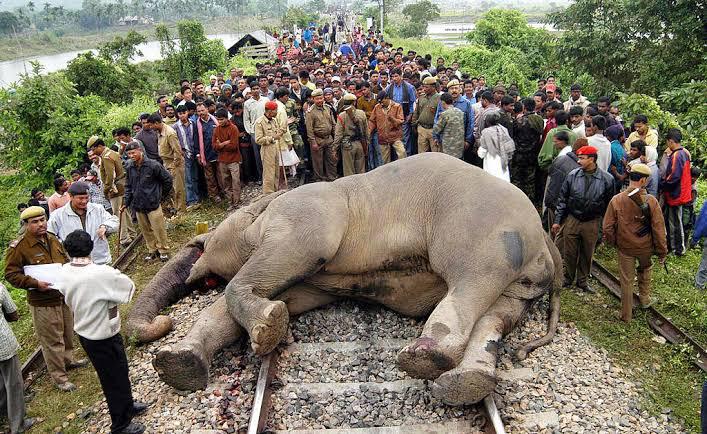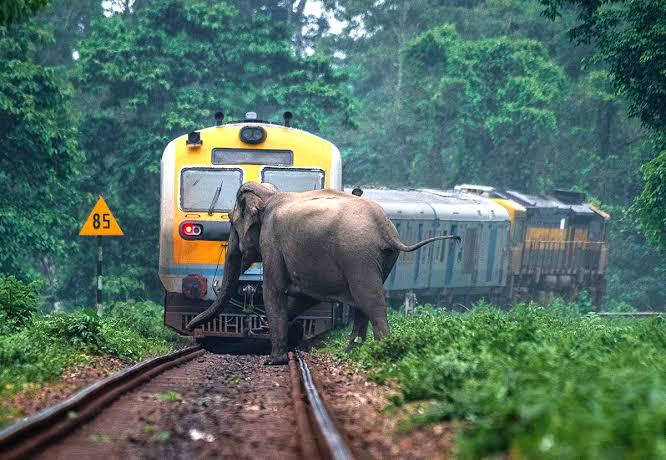On Friday, Tamil Nadu Forest Minister M Mathiventhan launched an advanced surveillance system powered by Artificial Intelligence (AI) and Machine Learning in Madukkarai, Coimbatore district to safeguard elephants from fatal accidents on railway tracks.
Increase in Human-Elephant Conflict
As per a statement issued by the state government, the Coimbatore forest division experienced a significant increase in Human-Elephant Conflict (HEC) in recent time, significantly due to rising elephant population, disturbances in migration corridors, increased developmental activities in and along the animal migratory paths, changes in land use patterns and agricultural practices, and anthropogenic pressure led to increasing instances of HEC in the region.
Elephants in the Coimbatore forest division are seasonal migrants, travelling from Nilgiris and Sathyamangalam to forest regions in Kerala. Officials noted specific locations such as Walayar, Bolampatty, Anaikatti reserve forest, Gopinari reserve forest, Hulical, Jaccanari slopes, Nilgiris Eastern Slope reserve forest, Soolakkarai, Singapathy, and Iruttu Pallam blocks as preferred retreats for the elephants during the rainy season.
Between 2021 and 2023, elephants in the Coimbatore forest division strayed about 9,000 times. A major issue was elephants crossing railway tracks in the Madukkarai range, leading to train accidents.

Two railway tracks traverse the Soolakarai beat and Bolampatti Block-I Reserved Forests in the Madukkarai Range, an area frequently visited by elephants and bordered by Kerala forests along the Walayar River. Tragically, since 2008, 11 elephants, including young calves and juveniles, have lost their lives in train collisions.
₹7.24 crore AI-enabled autonomous surveillance system
To address this challenge, the state government, in consultation with experts, has decided to implement an AI-enabled autonomous surveillance system, which aims to monitor elephant movements round the clock along the railway tracks to effectively track their presence and prevent accidents.
State Forest Minister M Mathiventhan mentioned that the AI-enabled surveillance system was installed along the railway lines in the Madukkarai forest range, costing ₹7.24 crore, after a field investigation was conducted, it was identified that a seven-kilometre stretch of railway track is the most vulnerable.
Mathiventhan said “The forest department and railway officials will work together to prevent accidents based on the data generated by the AI-enabled surveillance system. The data will also help study elephant behaviour and profile individual elephants for future decision making,”
Supriya Sahu, additional chief secretary for environment, climate change, and forest, stated that approximately 130 trains traverse the A and B railway lines daily, with nearly 1,000 elephant crossings reported on these tracks each year.
How will it work?
According to officials, the AI-based surveillance system consists of 12 tall towers spaced 500 metres apart ( 5 towers along the A line and seven towers along the B line).
Each tower is equipped with twin 360-degree, thermal night vision and regular cameras, providing clear visuals up to 900 metres. They are strategically placed along the railway track in Bolampatti Block-I forest.

Staff at the control centre can zoom in or out of real-time visuals captured by the thermal imaging technology. The sensed data is automatically transmitted to the control room for real-time processing.
Forest department frontline staff, along with the technical team, will operate on a shift basis in the control room to monitor animal movement and alert train drivers via calls, SMS messages, and alerts. Additionally, hooters and digital display alerts are positioned near the track for train drivers.
The system generates alerts upon detecting elephant presence in three zones: yellow (100-150 metres), orange (50-100 metres), and red (0-50 metres), signalling proximity to the tracks. These alerts are promptly sent to forest and railway officials to prevent train-elephant collisions.
©️ Copyright 2024. All Rights Reserved Powered by Vygr Media.




















